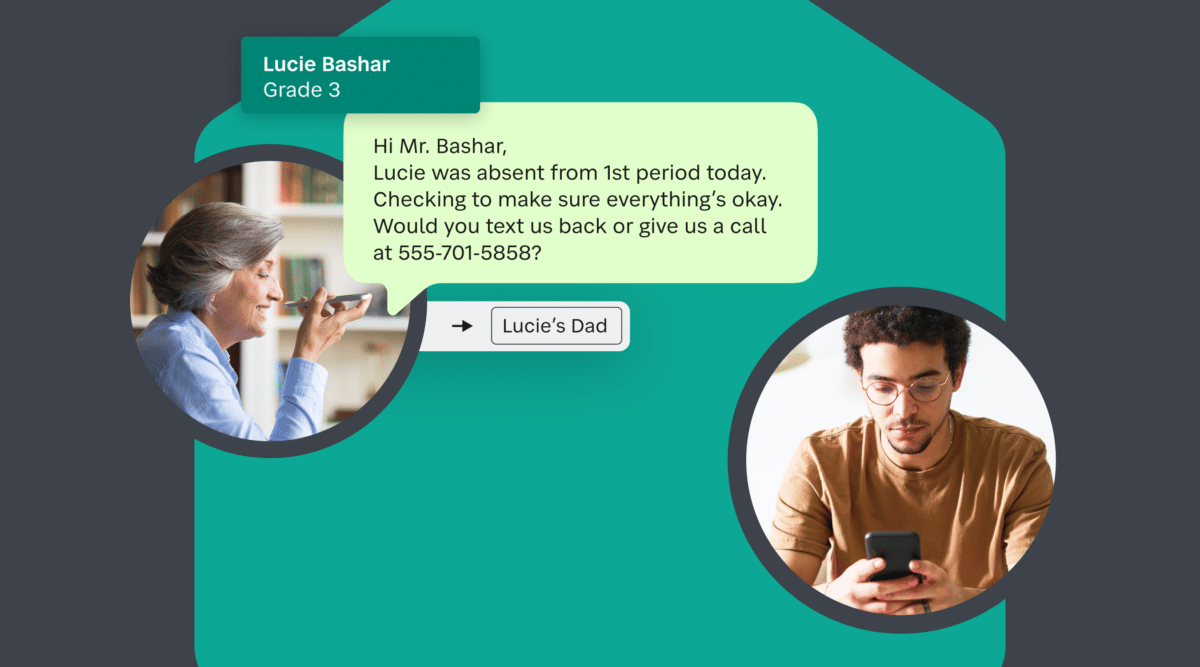

Why K-12 Community Engagement Is Essential Right Now
When it comes to student success, strong academics are only part of the equation. The partnerships schools build with families and the broader community play an equally critical role. But communication alone isn’t enough. It needs to be intentional, inclusive, and two-way.
So how can district leaders create a system where communication drives engagement and builds trust?
Our new eBook, The Connected District: Building Meaningful K-12 Community Engagement, offers a practical framework. Inside, you’ll find strategies to help your team improve school-to-home communication, foster relationships that support learning, and scale your outreach across the entire district.
What’s Holding Engagement Back?
Most districts already have tools in place to send messages and share updates. But too often, those efforts don’t result in real connection. Families might receive the message but still feel left out of the conversation.
Common challenges include:
- Messages that aren’t timely or relevant
- A lack of translation or interpretation support
- Limited visibility into which families are being reached
- Few opportunities for families to respond or participate
These gaps can have lasting consequences, including reduced parent involvement, missed interventions, and lower student attendance. A truly engaged district makes it easy for families to stay informed, feel heard, and act with confidence.
What Makes a District “Connected”?
A connected district is one where families, educators, and leaders are aligned through consistent, meaningful communication. Everyone has the information they need, when they need it. And every message serves a clear purpose.
In The Connected District, you’ll learn how to:
- Communicate at scale without losing personalization
- Reach every family, including those who are hardest to contact
- Enable two-way communication between families and schools
- Use data to guide and improve engagement efforts
If your district wants to build trust and improve outcomes, this guide is the place to start.
➡️ Download the free eBook now
Five Strategies to Build Stronger K-12 Community Engagement
The eBook shares many proven practices, but here are five strategies your team can start using today.
1. Make Communication a Strategic Priority
In connected districts, communication is more than a task. It’s part of the strategic plan. From the central office to campus leaders, everyone understands the role communication plays in improving student outcomes. This mindset drives better coordination, better tools, and better results.
2. Use Multiple Channels
Families have different preferences and access points. To keep everyone informed, districts need to use a variety of channels—text, email, voice, app notifications, and even print when needed. The key is consistency across platforms so no one misses critical updates.
3. Remove Language Barriers
Effective communication is inclusive. That means offering automatic translation tools, hiring bilingual liaisons, and providing interpretation support for meetings and conferences. When families understand the message, they can take action.
4. Create Opportunities for Two-Way Communication
Families don’t just want to receive updates. They want to ask questions, share concerns, and be part of the solution. Two-way messaging makes it possible to hold real conversations, build relationships, and respond to needs in real time.
5. Let Data Drive Your Outreach
Your communication data holds the answers to what’s working and what’s not. From open rates to read receipts to response times, having insight into engagement helps your team adjust messaging and focus resources where they matter most.
Every District Is Different. Your Engagement Plan Should Reflect That.
K-12 districts vary in size, structure, and geography. That’s why local context matters. In The Connected District, we break down how to apply engagement strategies in different settings.
Here are a few examples:
- Rural districts might face connectivity challenges. Consider mobile-optimized tools and explore alternatives like SMS or even community radio.
- Urban districts may need systems that support high mobility and multiple campuses. Centralized platforms and integrated contact management become critical.
- Districts serving multilingual families should prioritize translation features and culturally relevant outreach.
No matter your location or size, the SchoolStatus suite of solutions help you tailor your outreach and track impact across your entire system.
Real Results From a Real District
One district featured in the eBook struggled with chronic absenteeism and low family engagement. After implementing SchoolStatus Connect, they made communication more consistent and more accessible to every family.
Here’s what changed:
- 92% increase in two-way message replies
- 32% reduction in chronic absenteeism
- 100% of families reached in their preferred language
As a district leader shared:
“We went from one-way updates to real conversations. That helped us build trust, and it showed in our attendance and engagement numbers.”
This story isn’t unique. It’s what happens when communication is clear, accessible, and aligned with district goals.
Why Engagement Will Continue to Matter in 2025 and Beyond
Today’s families expect more from their school communication—and they should. They want transparency, timeliness, and a relationship with the school community.
When districts deliver on those expectations, they gain:
- Stronger family-school partnerships
- Fewer communication gaps or misunderstandings
- Higher attendance and participation
- Better outcomes for students
Districts that prioritize meaningful engagement are better positioned to navigate change, respond to student needs, and build lasting trust with their communities.
Take the First Step Toward a More Connected District
It’s time to move from updates to impact.
Download the free eBook now
and get a practical roadmap for strengthening your district’s approach to communication and engagement.
DownloadThis guide is ideal for:
- Superintendents and deputy superintendents
- District communication leaders
- Family engagement coordinators
- Attendance and student services teams
Inside, you’ll find real examples, proven strategies, and next steps your team can act on immediately.
Stay Connected
News, articles, and tips for meeting your district’s goals—delivered to your inbox.





